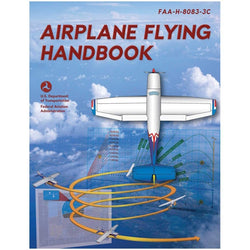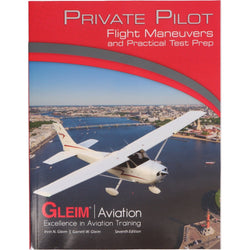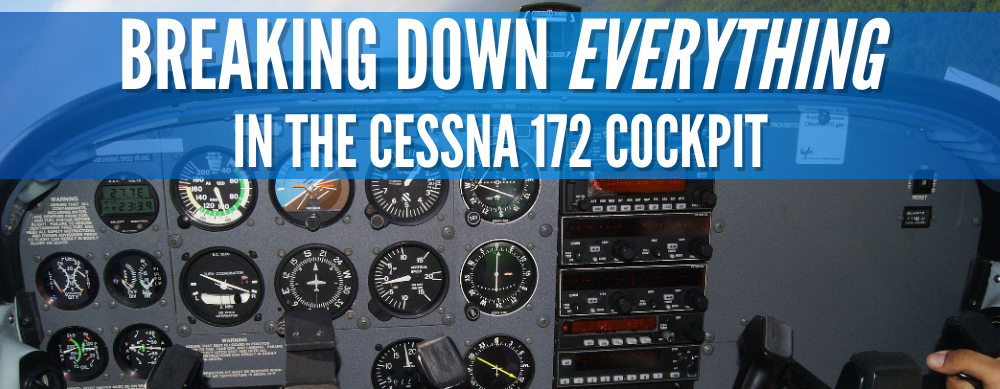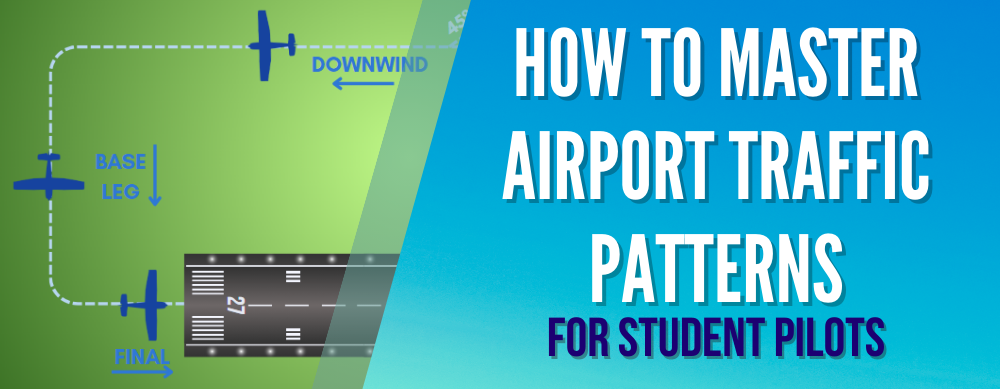According to the Air Safety Institute, unintended stalls are among the leading causes of fatal accidents for pilots. Although pilots must study them, train for them and practice recovering from them, unintended stalls are still claiming too many lives.
What can you do to decrease your likelihood of becoming a statistic? Learn as much as possible about what causes each type of stall. Know the situations and conditions to watch out for.
Learn to recognize the warning signs that a stall is imminent and review the procedures for stall recovery. Finally, practice, practice, practice so that you build muscle memory and can react to a stall instinctually.
Before we delve into the details about each type of stall, let’s go back to basics and explore what a stall actually is and how it is caused.

What is an Aircraft Stall?
Although the word used to describe them is the same, an aircraft stall is very different from an automobile stall. When a car stalls, it means that the engine stops running. In aviation, we would call that scenario engine failure or an engine stall.
When we talk about airplane wing stalls, we are usually referencing an aerodynamic stall which—put simply—means that the amount of lift our wings are producing is no longer enough to keep us flying.
Lift is created when air flows over the leading edge of the wing and being pulled downward at the following edge of the wing. This downward force generates an equal and opposite upward force which we refer to as lift.
High Angle of Attack
The amount of lift generated depends on the Angle of Attack (AOA). The angle of attack is the angle between the line from the leading to trailing edge of the wing (chord line) and the relative wind or the direction of the aircraft’s motion. As the angle of attack increases, the amount of lift increases as well—to a point.
Too great a wing angle, and you approach the critical angle of attack or stall angle of attack. The critical angle of attack varies by aircraft and situation. It is the angle at which the flow of air over the top of the wing is no longer smooth along the wing.
When the airflow separates from the wing, it burbles and reduces the lift coefficient to an unstainable level. Meet or exceed this critical angle of attack, and you will find that a stall occurs.
Factors like air speed, weight, load factor, turns and altitude come into play as well. The critical angle of attack will vary depending on a combination of these factors.
Bernoulli's Principle
Daniel Bernoulli developed a principle that helps us understand why an airplane can fly. The upper surface of the wings are curved, so when air flow passes over the wing surface faster than the bottom. Because of this difference in speed, there's lower pressure on the top of the wing, and this lift is what causes a plane to take off.
3 Different Types of Stalls
Even though the definition of all stalls is the same—not enough lift—there are different types of stalls. Today we will walk through the 3 main categories of stalls:
- Power-Off
- Power-On
- Accelerated
We will explore what each is, what causes it and how to avoid it. Specific stall recovery procedures will vary by aircraft, so for reference, we will review the procedures for two common training aircraft—the Cessna 172 and the Piper Cherokee 180.
Learning how to recognize, prevent and recover from each type of stall can mean the difference between life and death.

Power-Off Stall
Also called an approach-to-landing stall, this type of stall commonly occurs as you are getting ready to land the aircraft—usually on final or short final. A power-off stall is often caused by the aircraft speed decreasing to a point where insufficient lift is generated.
Recognition of Potential Power-Off Stall
As you approach a power-off stall situation, the controls will be sluggish, and the stall warning indicator buzzer will come on. You may feel some buffeting in the control surfaces of the aircraft. Your airspeed will be slow and getting slower.
Prevention of Power-Off Stall
Remember one of the #1 rules of aviation: always fly the aircraft. Airspeed is life. Power-off stalls are often caused by the pilot getting distracted and losing sight of the airspeed. Train yourself to maintain awareness of your airspeed even while you are busy setting up for landing.
Power-Off Stall Recovery Procedure for Cessna 172
To recover from a power-off stall scenario in a Cessna 172, execute the following sequence of procedures from the Pilot’s Operating Handbook (POH):
- At stall buffet, simultaneously reduce pitch, level the wings, add full power, carb heat off, right rudder pressure.
- Smoothly raise the pitch to climb altitude.
- Transition to cruise.
Power-Off Stall with Flaps Recovery Procedure for Cessna 172
To recover from a power-off stall with flaps scenario in a Cessna 172, execute the following sequence of procedures from the Pilot’s Operating Handbook (POH):
- At stall buffet, simultaneously reduce pitch, level wings, add full power, carb heat off, right rudder pressure.
- Immediately after power is applied, raise flaps to 20 degrees (2 seconds) and raise pitch to climb altitude.
- As the airplane stabilizes, raise flaps to 10 degrees (2 seconds).
- Flaps up and transition to cruise.
Power-Off Stall Recovery Procedure for Piper Cherokee 180
To recover from a power off stall scenario in a Piper Cherokee 180, execute the following sequence of procedures from the Pilot’s Operating Handbook (POH):
- Reduce the angle of attack and simultaneously apply takeoff power.
- If banked, roll level passing Vs and pitch to climb altitude.
- Flaps 25. Confirm positive rate of climb.
- Accelerate past Vx set flaps 10. Accelerate past Vy set flaps 0.
- Level off at safe altitude or original starting point.
Power-On Stall
Power-on stalls can occur during takeoffs, climbs, normal flight and aborted landings. A power-on stall during takeoffs and climbs can occur from too steep a pitch, too much weight, an incorrect flap setting or density altitude effects on aircraft performance.
The Air Safety Institute says that stalls are the second leading cause of takeoff and climb accidents.
Recognition of Potential Power-On Stall
An early indicator of a power-on stall is a change in the sound made by the airflow along the exterior of the aircraft.
As you become more sensitive and attuned to what normal flight feels like, you will also be able to sense the decrease in speed that precedes a power-on stall.
As you enter a power-on stall, your aircraft will exhibit many of the same indicators as it did in a power-off stall. If stall warning indicators are installed, their alarms will go off.
Expect to experience decreased responsivity of aircraft controls and some buffeting. The nose will shift from pitching upward to pitching downward and you will enter a rapid rate of descent.
Prevention of Power-On Stall
To help prevent a power-on stall, avoid flying at minimum airspeeds. Be cognizant of your aircraft’s attitude during takeoffs and climbs. Be sure the nose isn’t too high.
Go-arounds or aborted landings also present an increased potential for power-on stalls, accounting for 18% of power-on stalls. In this scenario, continue flying the aircraft and do not become distracted by your radio communication.
As you add power, remember that you are trimmed for landing speed, so when your aircraft starts accelerating, it will want to pitch up. Retracting the flaps will also cause the plane to pitch up.
Remember to re-trim and pitch down before you reach the critical angle of attack and go into a power-on stall.
To deepen your understanding of power-on stalls, watch the AOPA Air Safety Institute’s training and awareness video on avoiding power-on stalls.
Power-On Stall Recovery Procedure for Cessna 172
To recover from a power-on stall scenario in a Cessna 172, execute the following sequence of procedures from the POH:
- At stall buffet, lower pitch below the horizon, then smoothly raise pitch to climb altitude and transition to cruise.
Power-On Stall Recovery Procedure for Piper Cherokee 180
To recover from a power-on stall scenario in a Piper Cherokee 180, execute the following sequence of procedures from the POH:
- Reduce the angle of attack.
- If banked, roll level passing Vs and pitch to climb altitude.
- Confirm positive rate of climb.
- Accelerate past Vx set flaps 10. Accelerate past Vy set flaps 0.
- Level off at safe altitude or starting point.
Accelerated or Dynamic Stall
An accelerated or dynamic stall is often referred to as a “high speed stall.” This type of stall usually occurs when a quick maneuver increases the angle of attack (AOA) until it exceeds the wings’ ability to produce lift.
Intentional high-speed stalls are often seen during airshows, although they can occur during normal flight as well if a maneuver is executed too abruptly.
Traffic pattern stalls are a type of dynamic stall that occur when the pilot banks too sharply in the pattern.
Traffic pattern altitude of 1,000 feet AGL is also where the Air Safety Foundation found that most dynamic stall-spin accidents happened. With less altitude to recover from these spins, the results are too often fatal.
Learning to avoid traffic pattern stalls is a critical skill to develop and is one that could pay off exponentially someday.
Recognition
Because dynamic stalls can happen quickly, you may have little to no warning signs that a stall is imminent. In some cases, you may have time to notice the characteristic pre-stall buffet of the aircraft. If you find yourself asking how you got into this stall, you are most likely in a high-speed stall.
Prevention
To minimize your chances of ending up in an accelerated stall, conduct all of your maneuvers smoothly and within maneuvering speed (Va) for your aircraft. When making turns, avoid overbanking and pulling back in the turn.
Recovery Procedure
To recover from an accelerated or dynamic stall scenario, execute the following sequence of procedures:
- Reduce your angle of attack (AOA)
- Level the wings
If your dynamic stall is the result of a steep turn, for example, you may find yourself going into a spin and needing to conduct a spin recovery.
How to Train for Aircraft Stalls
Like many of your other piloting skills, stall recovery is something that must be trained for and rehearsed. The more you develop your muscle memory surrounding recovery from stall procedures, the greater your likelihood of being able to smoothly recover from an unplanned stall.
Of course, during flight training, your flight instructor will help you practice and demonstrate your ability to recover from a 1G (single gravity) straight ahead stall.
Still, the Air Safety Institute says that isn’t enough. It is time to invest time in some advanced stall training that more accurately simulates the real-world scenarios that lead to stall-based accidents and fatalities.
Practice Slow Flight
One way to develop a hands-on understanding and feel for aircraft flight dynamics in a near stall situation is to practice slow flight. Slow flight means flying your aircraft just above the stall speed.
This offers a valuable opportunity to experience first-hand the conditions that lead to a stall. During slow flight, you also learn how your own aircraft reacts to and gives indications of an imminent stall.
Does one wing stall first and begin to dip? This is important information because it can help you anticipate and ward off a potential stall-induced spin if you someday find yourself in an unintentional stall.
The reality is that in the world of general aviation, unless you continue your training, the day you earn your private pilots’ license is often the most proficient you will ever be with stalls and stall training. Let that set in for a moment.
Realize that unless you continue your training, those perishable skills you have been taught will start to get rusty the day you get your certification. This is one of the reasons the FAA established their WINGS Program.
Remembering Air France Flight 447
A tragic example of how dangerous a stall can be involved Flight 447, a scheduled international passenger flight from Rio de Janeiro, Brazil, to Paris, France, crashed into the Atlantic Ocean in 2009 killing all 228 passengers and crew.
The BEA concluded that inconsistencies with airspeed measurements caused an aerodynamic stall which the pilots failed to correct. It is the deadliest accident in Air France history and the deadliest involving an Airbus A330.
FAA WINGS Pilot Proficiency Program
The FAA WINGS Pilot Proficiency Program’s objective is to “address the primary accident causal factors that continue to plague the general aviation community.”
It’s designed to help you continue to improve your skills and knowledge as a pilot and is based on the premise that if you “maintain currency and proficiency in the basics of flight you will enjoy a safer and more stress-free flying experience.”
WINGS essentially looks at accident statistics for your type of aircraft and provides you with a training platform so you can beat the odds.
How it works:
You choose the category and class of aircraft you wish to continue your training in. WINGS will then provide you with the requirements that are needed to continue proficiency in that aircraft type. WINGS consists of two separate components, the flight instruction and the continuing education component.
Flight Instruction
WINGS is not an award program but a true pilot proficiency program. It has shown to be most effective when you conduct WINGS training throughout the year which not only keeps your skills up but allows you to fly with an instructor in all seasons and in all flight conditions.
Continuing Education
To meet this goal, WINGS provides you with many opportunities to complete online courses, attend seminars and other events and participate in webinars.
Many third-party activities like those offered via AOPA, ASA, Sporty’s, Gleim Publications, and others qualify for WINGS credit and will indicate that on their website. In most cases you’ll automatically receive your WINGS credit upon taking the classes.
Did we mention that any Phase of WINGS automatically satisfies the requirements for your flight review? Why not knock out two birds with one stone? With WINGS, you’ll be flying on a regular basis and it’s a great way to not only stay sharp but to continue learning with and without an instructor.
 Wrapping it all Up
Wrapping it all Up
An unintentional stall is one of the scariest situations that a pilot can find themselves in. Survival depends on awareness of the warning signs, fast recognition of the stall situation and execution of a smooth and rapid recovery.
The best approach to stalls is to study them, train for them, practice them and then do everything possible to prevent having to experience an unplanned real-life stall.
Having a thorough understanding of aerodynamics plus hands-on recovery skills, experience and ongoing training is the best way to set yourself up for safe, uneventful flights.
Want to learn more about stalls?
Check out these guides to help you get on your way to becoming a more proficient pilot!
Did you find this article helpful?
Do you think we missed anything important? Let us know in the comments below!












